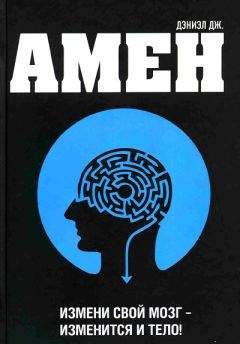Гари Маркус - Несовершенный человек. Случайность эволюции мозга и ее последствия.

Скачивание начинается... Если скачивание не началось автоматически, пожалуйста нажмите на эту ссылку.
Жалоба
Напишите нам, и мы в срочном порядке примем меры.
Описание книги "Несовершенный человек. Случайность эволюции мозга и ее последствия."
Описание и краткое содержание "Несовершенный человек. Случайность эволюции мозга и ее последствия." читать бесплатно онлайн.
Человек привык считать себя венцом творения: свои сильные стороны – нормой, а слабости – отклонением. Подход автора принципиально другой: мы изначально несовершенны; наш мозг, как и тело, в ходе эволюции формировался достаточно случайно, из «подручных материалов» природы и являет собой так называемый клудж – нелепое, неуклюжее, но удивительно эффективное решение проблемы. Понятие клуджа проливает свет на важные стороны нашей жизни и объясняет множество проблем, с которыми мы сталкиваемся. Выводы автора оптимистичны: имея должное понимание соотношения сил и слабостей человеческого ума, мы получаем возможность помочь не только себе, но и обществу.
Macrae, C.N., Bodenhausen, G.V., Milne, А.В., & Jetten, J. (1994). Out of mind but back in sight: Stereotypes on the rebound. Journal of Personality and Social Psychology, 67(5), 808-17.
Marcus, G.F. (1989). The psychology of belief revision. Bachelor's thesis, Hampshire College, Amherst, MA.
Marcus, G.F. (2004). The birth of the mind: How a tiny number of genes creates the complexities of human thought. New York: Basic Books.
Marcus, G.F., & Wagers, M. (under review). Tree structure and the structure of sentences: A reappraisal. New York University.
Marks, I., & Nesse, R. (1997). Fear and fitness: An evolutionary analysis of anxiety disorders. In S. Baron-Cohen (Ed.), The maladapted mind: Classic readings in evolutionary psychopathology (pp. 57-72). Hove, UK: Psychology Press.
Markus, G.B. (1986). Stability and change in political attitudes: Observed, recalled, and "explained." Political Behavior, 8(1), 21-44.
McClure, S.M., Botvinick, M.M., Yeung, N., Greene, J.D., & Cohen, J.D. (in press). Conflict monitoring in cognition-emotion competition. In J.J. Gross (Ed.), Handbook of emotion regulation. New York: Guilford.
Mealey, L. (1995). The sociobiology of sociopathy: An integrated evolutionary model. Behavioral and Brain Sciences, 18(3), 523-41.
Messick, D.M., Bloom, S., Boldizar, J.P., & Samuelson, C.D. (1985). Why we are fairer than others. Journal of Experimental Social Psychology, 21(5), 480-500.
Meston, С.M., & Buss, D.M. (2007). Why humans have sex. Archives of Sexual Behavior, 36(4), 477-507.
Metcalfe, J., & Shimamura, A.P. (1994). Metacognition: Knowing about knowing. Cambridge, MA: MIT Press.
Metzger, M.J., Flanagin, A.J., & Zwarun, L. (2003). College student Web use, perceptions of information credibility, and verification behavior. Computers and Education, 41(3), 271-90.
Miller, G., & Chomsky, N.A. (1963). Finitary models of language users. In R.D. Luce, R.R. Bush, & E. Galanter (Eds.), Handbook of mathematical psychology (Vol. II). New York: Wiley.
Miller, G.F. (2000). Evolution of human music through sexual selection. In N.L. Wallin, B. Merker, & S. Brown (Eds.), The origins of music (pp. 329-60). Cambridge, MA: MIT Press.
Minino, A.M., Arias, E., Kochanek, K.D., Murphy, S.L., & Smith, B.L. (2002). Deaths: Final data for 2000. National Vital Statistics Report, 50(15), 1-119.
Mischel, W., Shoda, Y., & Rodriguez, M.I. (1989). Delay of gratification in children. Science, 244(4907), 933-38.
Montague, R. (2006). Why choose this book? How we make decisions. New York: Dutton.
Montalbetti, M.M. (1984). After binding: On the interpretation of pronouns. Doctoral dissertation, MIT, Cambridge, MA.
Moseley, D., Baumfield, V., Higgins, S., Lin, M., Miller, J., Newton, D., Robson, S., Elliot, J., & Gregson, M. (2004). Thinking skill frameworks for post-16 learners: An evaluation. Newcastle upon Tyne, UK: Research Centre, School of Education.
Mussweiler, Т., Strack, E., & Pfeiffer, T. (2000). Overcoming the inevitable anchoring effect: Considering the opposite compensates for selective accessibility. Personality and Social Psychology Bulletin, 26(9), 1142.
Nesse, R. (1997). An evolutionary perspective on panic disorder and agoraphobia. In S. Baron-Cohen (Ed.), The maladapted mind: Classic readings in evolutionary psychopathology (pp. 72-84). Hove, UK: Psychology Press.
Nesse, R.M., & Williams, G.C. (1994). Why we get sick: The new science of Darwinian medicine (1st ed.). New York: Times Books.
Nickerson, R.S. (1988). On improving thinking through instruction. Review of Research in Education, 15, 3-57.
Nielsen. (2006). Nielsen Media Research reports television's popularity is still growing. From:
http://www.nielsenmedia.com/nc/portal/site/Public/menuitem.55dc65b4a7d5adff3f65936147a062a0/?vgnextoid=4156527aacccd010VgnVCM100000ac0a260aRCRD.
Nisbett, R.E., Krantz, D.H., Jepson, C., & Kunda, Z. (1983). The use of statistical heuristics in everyday inductive reasoning. Psychological Review, 90, 339-63.
Noice, H., & Noice, T. (2006). What studies of actors and acting can tell us about memory and cognitive functioning. Current Directions in Psychological Science, 15(1), 14-18.
Nuttin, J.M. (1987). Affective consequences of mere ownership: The name letter effect in twelve European languages. European Journal of Social Psychology, 17(4), 381-402.
Oakhill, J., Johnson-Laird, P.N., & Garnham, A. (1989). Believability and syllogistic reasoning. Cognition, 31(2), 117-40.
Pacini, R., Muir, F., & Epstein, S. (1998). Depressive realism from the perspective of cognitive-experiential self-theory. Journal of Personality and Social Psychology, 74(4), 1056-68.
Pandelaere, M., & Dewitte, S. (2006). Is this a question? Not for long: The statement bias. Journal of Experimental Social Psychology, 42(4), 525-531.
Parker, A. (2006). Evolution as a constraint on theories of syntax: The case against minimalism. Doctoral dissertation, University of Edinburgh, Edinburgh, UK.
Perkins, D.N. (1985). Postprimary education has little impact on informal reasoning. Journal of Educational Psychology, 77(5), 562-71.
Pew Research Center. (2007). Republicans lag in engagement and enthusiasm for candidates. From:
http://people-press.org/reports/pdf/307.pdf.
Pinker, S., & Jackendoff, R. (2005). The faculty of language: What's special about it? Cognition, 95(2), 201-36.
Plomin, R. (1997). Behavioral genetics (3rd ed.). New York: W.H. Freeman.
Plomin, R., DeFries, J.C, McClearn, G.E., & McGuffin, P. (2001). Behavior genetics. New York: Worth.
Polimeni, J., & Reiss, J.P. (2002). How shamanism and group selection may reveal the origins of schizophrenia. Medical Hypotheses, 58(3), 244-48.
Posner, M.I., & Keele, S.W. (1968). On the genesis of abstract ideas. Journal of Experimental Psychology, 77(3), 353-63.
Prasada, S. (2000). Acquiring generic knowledge. Trends in Cognitive Sciences, 4, 66-72.
Premack, D. (2004). Psychology: Is language the key to human intelligence? Science, 303(5656), 318-320.
Price, J., Sloman, L., Russell Gardner, J., Gilbert, P., & Rohde, P. (1997). The social competition hypothesis of depression. In S. Baron-Cohen (Ed.), The maladapted mind: Classic readings in evolutionary psychopathology (pp. 241-54). Hove, UK: Psychology Press.
Pullum, G.K. (1991). The great Eskimo vocabulary hoax and other irreverent essays on the study of language. Chicago: University of Chicago Press.
Quattrone, G.A., & Tversky, A. (1988). Contrasting rational and psychological analyses of political choice. American Political Science Review, 82, 719-36.
Rachlin, H. (2000). The science of self-control. Cambridge, MA: Harvard University Press.
Read, D., & van Leeuwen, B. (1998). Predicting hunger: The effects of appetite and delay on choice. Organizational Behavior and Human Decision Processes, 76(2), 189-205.
Reder, L.M., & Kusbit, G.W. (1991). Locus of the Moses illusion: Imperfect encoding, retrieval, or match. Journal of Memory and Language, 30, 385-406.
Robinson, T.N., Borzekowski, D.L.G., Matheson, D.M., & Kraemer, H.C. (2007). Effects of fast-food branding on young children's taste preferences. Archives of Pediatrics and Adolescent Medicine, 161(8), 792.
Rosa-Molinar, E., Krumlauf, R.K., & Pritz, M.B. (2005). Hindbrain development and evolution: Past, present, and future. Brain, Behavior, and Evolution, 66(4), 219-21.
Ross, M., & Sicoly, F. (1979). Egocentric biases in availability and attribution. Journal of Personality and Social Psychology, 37(3).
Russell, B. (1918/1985). The philosophy of logical atomism. Lasalle, IL: Open Court.
Russo, J.E., & Schoemaker, P.J.H. (1989). Decision traps: Ten barriers to brilliant decision-making and how to overcome them (1st ed.). New York: Doubleday/Currency.
Schacter, D.L. (2001). The seven sins of memory: How the mind forgets and remembers. Boston: Houghton Mifflin.
Schacter, D.L., & Addis, D.R. (2007). Constructive memory: The ghosts of past and future. Nature, 445(7123), 27.
Schelling, T.C. (1984). Choice and consequence. Cambridge, MA: Harvard University Press.
Schooler, J.W., Reichle, E.D., & Halpern, D.V. (2004). Zoning out while reading: Evidence for dissociations between experience and metaconsciousness. In Thinking and seeing: Visual metacognition in adults and children (pp. 203-206). Cambridge, MA: MIT Press.
Schwartz, В., & Schwartz, B. (2004). Paradox of choice: Why more is less. New York: HarperCollins.
Schwarz, N., Strack, E., & Mai, H.P. (1991). Assimilation and contrast effects in part-whole question sequences: A conversational logic analysis. Public Opinion Quarterly, 55(1), 3-23.
Sherman, J.W., Macrae, C.N., & Bodenhausen, G.V. (2000). Attention and stereotyping: Cognitive constraints on the construction of meaningful social impressions. European Review of Social Psychology, 11, 145-175.
Shiv, В., & Fedorikhin, A. (1999). Heart and mind in conflict: The interplay of affect and cognition in consumer decision making. Journal of Consumer Research, 26(3), 278.
Simon, L., Greenberg, J., Harmon-Jones, E., Solomon, S., Pyszczynski, Т., Arndt, J., & Abend, T. (1997). Terror management and cognitive experiential self-theory: Evidence that terror management occurs in the experiential system. Personality and Social Psychology, 72(5), 1132-46.
Simons, D.J., & Levin, D.T. (1998). Failure to detect changes to people during a real-world interaction. Psychonomic Bulletin and Review, 5(4), 644-49.
Smith, D.M., Schwarz, N., Roberts, T.R, & Ubel, P.A. (2006). Why are you calling me? How study introductions change response patterns. Quality of Life Research, 15(4), 621-30.
Smolin, L. (2006). The trouble with physics: The rise of string theory, the fall of a science, and what comes next. Boston: Houghton Mifflin.
Solomon, S., Greenberg, J., & Pyszczynski, T. (2004). The cultural animal: Twenty years of terror-management theory and research. Handbook of Experimental Existential Psychology, 13-34.
Solon, T. (2003). Teaching critical thinking! The more, the better. The Community College Experience, 9(2), 25-38.
Stanovich, K.E. (2003). The fundamental computational biases of human cognition: Heuristics that (sometimes) impair decision making and problem solving. In J.E. Davidson & R.J. Sternberg (Eds.), The psychology of problem solving (pp. 291-342). New York: Cambridge University Press.
Steel, P. (2007). The nature of procrastination: A meta-analytic and theoretical review of quintessential self-regulatory failure. Psychological Bulletin, 133(1), 65-94.
Steele, С.M., & Aronson, J. (1995). Stereotype threat and the intellectual test performance of African Americans. Journal of Personality and Social Psychology 69(5), 797-811.
Stich, S. (in press). Nicod lectures on morality. Cambridge, MA: MIT Press. Videos available at:
http://semioweb.msh-paris.fr/AR/974/liste_conf.asp.
Strack, R., Martin, L.L., & Schwarz, N. (1988). Priming and communication: Social determinants of information use in judgments of life satisfaction. European Journal of Social Psychology, 28(5), 429-42.
Strack, R., Martin, L.L., & Stepper, S. (1988). Inhibiting and facilitating conditions of the human smile: A nonobtrusive test of the facial feedback hypothesis. Journal of Personality and Social Psychology, 54(5), 768-77.
Svenson, O. (1981). Are we all less risky and more skillful than our fellow drivers? Act a Psychologica, 47(2), 143-218.
Takahashi, T. (2005). The evolutionary origins of vertebrate midbrain and MHB: Insights from mouse, amphioxus and ascidian Dmbx homeobox genes. Brain Research Bulletin, 66(4-6), 510-17.
Talarico, J.M., & Rubin, D.C. (2003). Confidence, not consistency, characterizes flash-bulb memories. Psychological Science, 14(5), 455-61.
Tetlock, P.E. (1985). Accountability: A social check on the fundamental attribution error. Social Psychology Quarterly, 48(3), 227-36.
Thaler, R.H. (1999). Mental accounting matters. Journal of Behavioral Decision Making, 12(3), 183-206.
Thompson, C. (2007). Halo 3: How Microsoft labs invented a new science of play. Wired, 15,140-47.
Thomson, J.J. (1985). The trolley problem. Yale Law Journal, 94(6), 1395-1415.
Подписывайтесь на наши страницы в социальных сетях.
Будьте в курсе последних книжных новинок, комментируйте, обсуждайте. Мы ждём Вас!
Похожие книги на "Несовершенный человек. Случайность эволюции мозга и ее последствия."
Книги похожие на "Несовершенный человек. Случайность эволюции мозга и ее последствия." читать онлайн или скачать бесплатно полные версии.
Мы рекомендуем Вам зарегистрироваться либо войти на сайт под своим именем.
Отзывы о "Гари Маркус - Несовершенный человек. Случайность эволюции мозга и ее последствия."
Отзывы читателей о книге "Несовершенный человек. Случайность эволюции мозга и ее последствия.", комментарии и мнения людей о произведении.

























